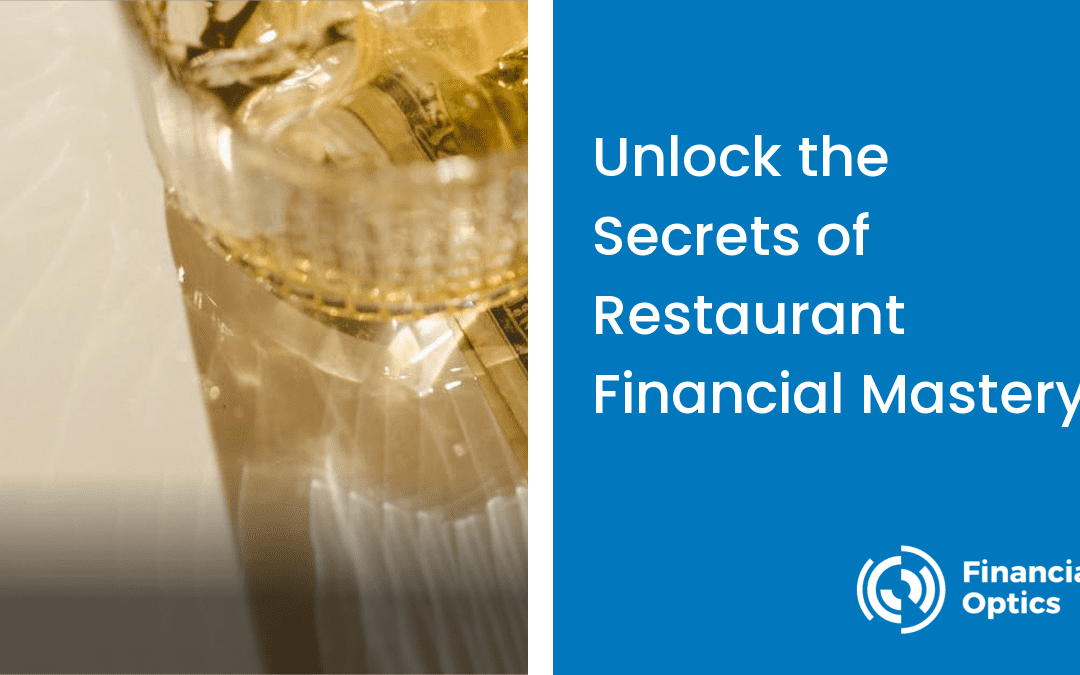Running a restaurant successfully demands more than just culinary finesse and customer service. It requires an understanding of financial mastery, a crucial ingredient in the recipe for business success. Let’s delve deeper into the key components of restaurant financial management, designed to elevate your business to new heights of profitability.
The Fundamentals of Restaurant Financial Management
Comprehending the basics of financial management is a pivotal step in running a successful restaurant. These foundations form the essential framework for a robust business.
Decoding Profit and Loss (P&L)
The P&L statement stands as the financial pulse of your business. It gives a clear picture of your restaurant’s revenue, cost of goods sold, overhead, and net profit. Regularly tracking and managing these figures, and understanding how they interconnect, can lead to better decision-making and improved financial health.
Mastering Prime Costs
Prime cost, the sum of your labor and cost of goods sold (COGS), is a crucial figure that every restaurant owner must closely monitor. It can influence your profit margins significantly, and understanding how to control it effectively can steer your restaurant towards a more sustainable financial future.
Leveraging Data for Financial Mastery
In this digital age, data can be your most trusted advisor, guiding you to make informed decisions and strategies.
Financial Analytics: Your Unseen Ally
Implementing financial analytics can shed light on valuable insights about your restaurant. By identifying trends, understanding customer behaviors, and evaluating the effectiveness of your business strategies, you can stay ahead of the curve and make impactful changes that increase profitability.
Embracing Technological Solutions
Technology can be a powerful tool in your financial management arsenal. Systems like POS and other financial management software can streamline your operations, automate time-consuming tasks, and provide a treasure trove of data that can guide your business decisions.
Navigating the Maze of Cost Management
Controlling costs is one of the most challenging aspects of running a restaurant. However, with a keen eye and strategic approach, you can significantly improve your bottom line.
Food Cost Management: A Balancing Act
Effectively managing your food costs involves a deep understanding of portion control, skillful negotiation with suppliers, and efficient inventory management. Each of these areas can contribute to significant savings and improve your COGS ratio, leaving you with a healthier profit margin.
Overhead Expenses: Unmasking the Hidden Thief
Overhead expenses, often underestimated, can eat into your profits if left unchecked. Regular audits and checks can help you identify areas where you might be overspending or wasting resources, enabling you to enact cost-saving measures without compromising the quality of your offerings.
Streamlining Payroll
Payroll management can be a complex task, but when done right, it can result in significant savings and a happier workforce.
The Efficiency of Staffing
Strategic staffing can be a key cost-saving strategy. By carefully planning your staffing needs according to your restaurant’s busy and lean periods, you can significantly reduce labor costs without affecting the customer experience.
Employee Retention: A Profitability Strategy
Keeping your good employees is more than just good business ethics—it’s a sound financial strategy. High turnover rates can result in higher recruitment and training costs. Investing in employee satisfaction and retention can contribute positively to your bottom line.
Frequently Asked Questions
1. What is the ideal prime cost for a restaurant?
I don’t like “general rules of thumb” when it comes to a prime cost percentage target, but ideally your prime cost should be less than 60-65% of total sales, allowing enough margin to cover overheads and generate profits. The best answer is that you should develop your own targets based on your restaurant style, location, values, culture, etc – do not use industry averages, your are better than average!
2. How often should I review my P&L statement?
Monthly reviews of your P&L statement are advisable to stay abreast of your financial health, supplemented by more detailed quarterly and annual reviews for strategic planning.
3. How can technology aid in financial management?
Technological solutions can simplify and automate various financial tasks, reducing errors, saving time, and providing valuable data-driven insights for better decision-making.
4. How can I make payroll more efficient?
Efficient scheduling, strategic staffing, and focus on employee retention can significantly streamline your payroll process and control labor costs.
5. How can I manage food costs effectively?
Regular audits of your food inventory, price negotiation with suppliers, and control over portion sizes can greatly contribute to effective food cost management.
Conclusion
Unlocking the secrets of restaurant financial mastery can help your restaurant navigate the challenging terrain of financial management with ease and confidence. By understanding and diligently implementing these practices, you can build a financially secure and prosperous restaurant that stands the test of time.

